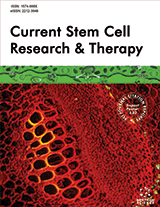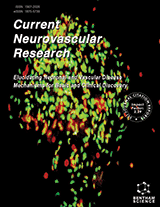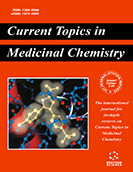Abstract
The management of osteochondral defects of articular cartilage, whether from trauma or degenerative disease, continues to be a significant challenge for Orthopaedic surgeons. Current treatment options such as abrasion arthroplasty procedures, osteochondral transplantation and autologous chondrocyte implantation fail to produce repair tissue exhibiting the same mechanical and functional properties of native articular cartilage. This results in repair tissue that inevitably fails as it is unable to deal with the mechanical demands of articular cartilage, and does not prevent further degeneration of the native cartilage. Mesenchymal stem cells have been proposed as a potential source of cells for cell-based cartilage repair due to their ability to self-renew and undergo multi-lineage differentiation. This proposed procedure has the advantage of not requiring harvesting of cells from the joint surface, and its associated donor site morbidity, as well as having multiple possible adult donor tissues such as bone marrow, adipose tissue and synovium. Mesenchymal stem cells have multi-lineage potential, but can be stimulated to undergo chondrogenesis in the appropriate culture medium. As the majority of work with mesenchymal stem cell-derived articular cartilage repair has been carried out in vitro and in animal studies, more work still has to be done before this technique can be used for clinical purposes. This includes realizing the ideal method of harvesting mesenchymal stem cells, the culture medium to stimulate proliferation and differentiation, appropriate choice of scaffold incorporating growth factors directly or with gene therapy and integration of repair tissue with native tissue.
Keywords: Fibrocartilage, hyaline cartilage, knee, mesenchymal stem cells, osteoarthritis, osteochondral defect, cartilage repair, Chemokines, stem cell migration, EMBRYONIC STEM CELLS
Current Stem Cell Research & Therapy
Title: Current Clinical Therapies for Cartilage Repair, their Limitation and the Role of Stem Cells
Volume: 7 Issue: 2
Author(s): Baljinder S Dhinsa and Adetola B Adesida
Affiliation:
Keywords: Fibrocartilage, hyaline cartilage, knee, mesenchymal stem cells, osteoarthritis, osteochondral defect, cartilage repair, Chemokines, stem cell migration, EMBRYONIC STEM CELLS
Abstract: The management of osteochondral defects of articular cartilage, whether from trauma or degenerative disease, continues to be a significant challenge for Orthopaedic surgeons. Current treatment options such as abrasion arthroplasty procedures, osteochondral transplantation and autologous chondrocyte implantation fail to produce repair tissue exhibiting the same mechanical and functional properties of native articular cartilage. This results in repair tissue that inevitably fails as it is unable to deal with the mechanical demands of articular cartilage, and does not prevent further degeneration of the native cartilage. Mesenchymal stem cells have been proposed as a potential source of cells for cell-based cartilage repair due to their ability to self-renew and undergo multi-lineage differentiation. This proposed procedure has the advantage of not requiring harvesting of cells from the joint surface, and its associated donor site morbidity, as well as having multiple possible adult donor tissues such as bone marrow, adipose tissue and synovium. Mesenchymal stem cells have multi-lineage potential, but can be stimulated to undergo chondrogenesis in the appropriate culture medium. As the majority of work with mesenchymal stem cell-derived articular cartilage repair has been carried out in vitro and in animal studies, more work still has to be done before this technique can be used for clinical purposes. This includes realizing the ideal method of harvesting mesenchymal stem cells, the culture medium to stimulate proliferation and differentiation, appropriate choice of scaffold incorporating growth factors directly or with gene therapy and integration of repair tissue with native tissue.
Export Options
About this article
Cite this article as:
S Dhinsa Baljinder and B Adesida Adetola, Current Clinical Therapies for Cartilage Repair, their Limitation and the Role of Stem Cells, Current Stem Cell Research & Therapy 2012; 7 (2) . https://dx.doi.org/10.2174/157488812799219009
| DOI https://dx.doi.org/10.2174/157488812799219009 |
Print ISSN 1574-888X |
| Publisher Name Bentham Science Publisher |
Online ISSN 2212-3946 |
 45
45
- Author Guidelines
- Bentham Author Support Services (BASS)
- Graphical Abstracts
- Fabricating and Stating False Information
- Research Misconduct
- Post Publication Discussions and Corrections
- Publishing Ethics and Rectitude
- Increase Visibility of Your Article
- Archiving Policies
- Peer Review Workflow
- Order Your Article Before Print
- Promote Your Article
- Manuscript Transfer Facility
- Editorial Policies
- Allegations from Whistleblowers
- Announcements
Related Articles
-
The Association between Serum Asymmetric Dimethylarginine and Coronary Atherosclerotic Plaque in an Asymptomatic Population
Immunology, Endocrine & Metabolic Agents in Medicinal Chemistry (Discontinued) Selenium Deficiency in Soils and Crops and its Impact on Animal and Human Health
Current Nutrition & Food Science Synthesis of 3-methyl-4H-benzo[b][1,4]thiazine-2-carboxylates Using CAN as a Catalyst and Its Conversion Into Guanidines
Current Organocatalysis Patent Selections
Recent Patents on Anti-Cancer Drug Discovery The Chemical Methods of Disulfide Bond Formation and Their Applications to Drug Conjugates
Current Organic Chemistry Growth Hormone-Releasing Factor: Structural Modification or Protection for More Potent Analogs
Combinatorial Chemistry & High Throughput Screening Antiangiogenic Resistance and Cancer Metabolism: Opportunities for Synthetic Lethality
Current Drug Targets Gene Therapy Approaches for Cardiovascular Diseases
Current Gene Therapy Role of NUCB2/nesfatin-1 as a Possible Biomarker
Current Pharmaceutical Design Molecular Targeting of Cell Death Signal Transduction Pathways in Cancer
Current Signal Transduction Therapy “Cardiovascular” Drugs in Rheumatoid Arthritis: Killing Two Birds with One Stone?
Immunology, Endocrine & Metabolic Agents in Medicinal Chemistry (Discontinued) Potent Chemopreventive Agents Against Pancreatic Cancer
Current Cancer Drug Targets Expression, Regulation and Function of Asporin, A Susceptibility Gene in Common Bone and Joint Diseases
Current Medicinal Chemistry Phase IV Studies: Some Insights, Clarifications, and Issues
Current Clinical Pharmacology Can We Delay the Accelerated Lung Aging in COPD? Anti-Aging Molecules and Interventions
Current Drug Targets Systematic Understanding of the Mechanisms of <i>Flos Chrysanthemi Indici</i>-mediated Effects on Hypertension <i>via</i> Computational Target Fishing
Combinatorial Chemistry & High Throughput Screening Is there any Additional Prognostic Value of Central Blood Pressure Wave Forms Beyond Peripheral Blood Pressure?
Current Pharmaceutical Design Exercise Rehabilitation for the Patient with Intermittent Claudication: A highly Effective yet Underutilized Treatment
Current Drug Targets - Cardiovascular & Hematological Disorders Idronoxil as an Anticancer Agent: Activity and Mechanisms
Current Cancer Drug Targets Leptin and the Cardiovascular System: A Review
Recent Patents on Cardiovascular Drug Discovery


























